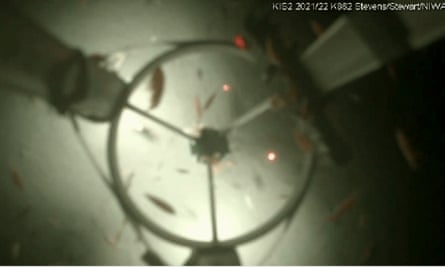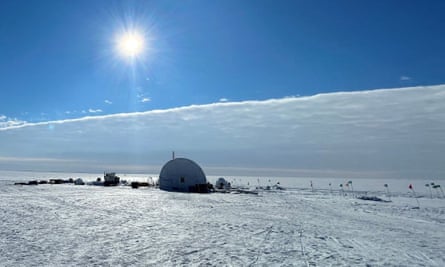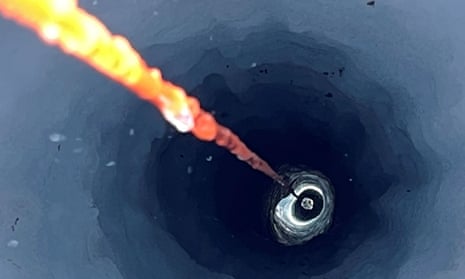Beneath a vast Antarctic ice shelf, in a cathedral-like cavern hundreds of metres high, are swarms of little shrimp-like creatures in a newly discovered underwater ecosystem that, until recently, had remained an ice-locked secret.
A team of scientists from New Zealand discovered the ecosystem 500 metres below the ice in a suspected estuary, hundreds of kilometres from the edge of the Ross Ice Shelf.
Antarctica New Zealand supported researchers from universities in Wellington, Auckland and Otago, the National Institute of Water and Atmospherics (Niwa) and Geological and Nuclear Sciences to investigate what role the estuary could play in climate-induced ice-shelf melt.
But when they drilled down through the ice and into the river, their camera was swarmed by amphipods, little creatures from the same lineage as lobsters, crabs and mites.
“For a while, we thought something was wrong with the camera, but when the focus improved, we noticed a swarm of arthropods around 5mm in size,” said Niwa’s Craig Stevens.

“We’ve done experiments in other parts of the ice shelf and thought we had a handle on things, but this time big surprises were thrown up.”
While there was a climate change motivation for the work, there was an element of discovery on the expedition, Stevens said.
“We were jumping up and down because having all those animals swimming around our equipment means that there’s clearly an important ecosystem there.”

The project’s lead, Huw Horgan from Te Herenga Waka Victoria University of Wellington, was the first to spot the estuary, after spying a groove in the ice while studying satellite imagery of the Ross Ice Shelf.
Researchers have been aware of a network of hidden freshwater lakes and rivers below the Antarctic ice sheets for some time but they have yet to be directly surveyed, Horgan said.
“Getting to observe and sample this river was like being the first to enter a hidden world.”
Instruments had been left in the river to observe its behaviour, he said, while lab researchers would investigate what makes the water unique.
The team’s findings extended further – it had just deployed its mooring a few days before the enormous eruption of Tongan volcano Hunga Tonga-Hunga Ha’apai. The team’s instruments detected a significant pressure change as the tsunami made its way through the cavity.
Seeing the eruption’s effects reminded Stevens just how connected the planet is. “Here we are, in a forgotten corner of the world, seeing real-time influences from events that felt worlds away. It was quite remarkable.”
